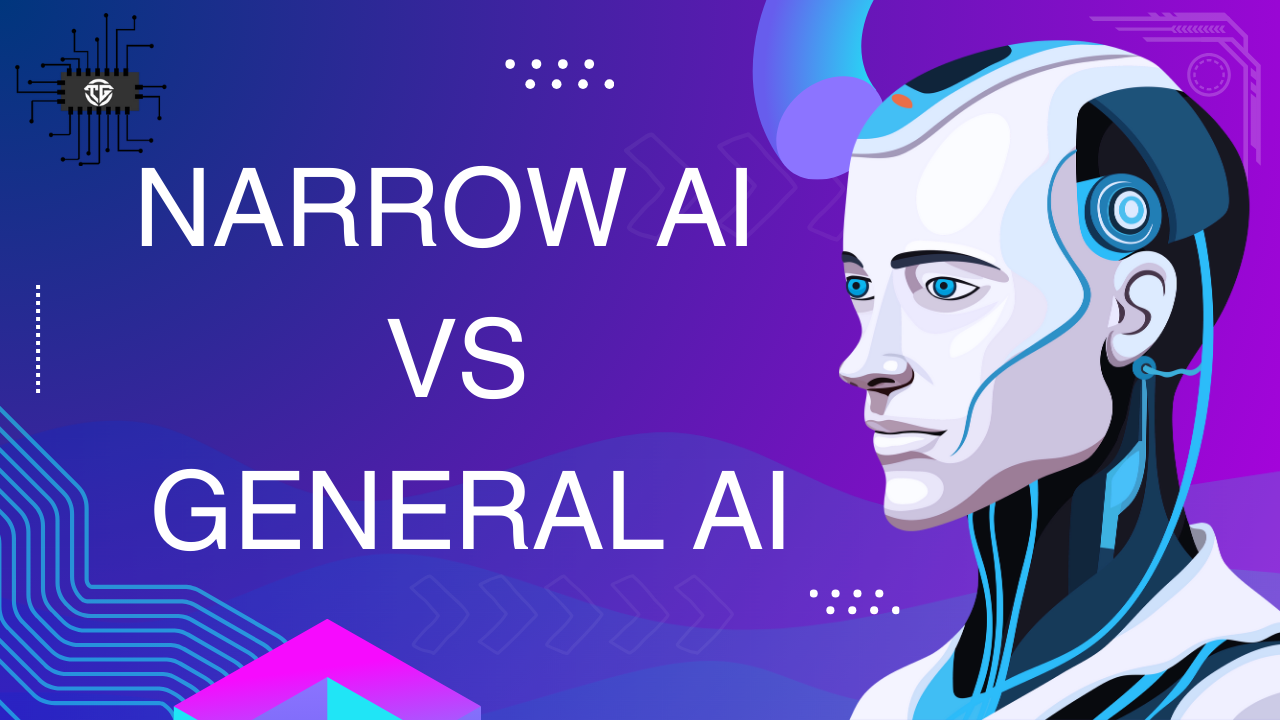Artificial Intelligence (AI) has become a buzzword in today’s technological landscape, transforming industries and impacting our daily lives in ways we might not even realize. AI is pervasive in our lives, powering everything from virtual assistants like Siri and Alexa to autonomous vehicles and personalized recommendations on streaming platforms. However, AI isn’t a uniform concept; it can be broadly divided into two main categories: Narrow AI and General AI. Understanding the difference between these two types of AI is crucial as we navigate the future of technology and its implications for society.
Narrow AI: The Present Reality
Narrow AI, also known as Weak AI, refers to AI systems that are designed and trained to perform a specific task or a limited set of tasks. These systems are built to operate within a predefined scope and cannot perform tasks outside of their designated functions. Narrow AI is the most common form of AI in use today, and it’s what powers many of the applications we interact with daily.
Examples of Narrow AI
- Virtual Assistants: Siri, Google Assistant, and Alexa are prime examples of Narrow AI. These virtual assistants can perform tasks such as setting reminders, providing weather updates, or playing music based on voice commands. However, they are limited to the functions they have been programmed to handle.
- Recommendation Algorithms: Platforms like Netflix, Amazon, and YouTube use AI algorithms to analyze user behavior and recommend content that aligns with individual preferences. These algorithms are highly effective in their specific domain but cannot perform tasks outside of content recommendation.
- Autonomous Vehicles: Companies like Tesla are utilizing Narrow AI to develop self-driving cars. These vehicles rely on AI to navigate roads, recognize obstacles, and make driving decisions. However, the AI driving these cars is tailored specifically to the task of driving and cannot apply its capabilities to unrelated tasks.
- Facial Recognition: AI systems used in security and social media platforms for facial recognition are another example of Narrow AI. These systems can accurately identify and verify individuals based on facial features but cannot perform tasks beyond this scope.
Limitations of Narrow AI
While Narrow AI is incredibly powerful within its domain, it is also limited by its specialization. It cannot generalize knowledge or skills across different tasks, meaning it cannot transfer its expertise from one area to another. For instance, an AI system designed for playing chess cannot suddenly start making medical diagnoses. This lack of versatility is the defining characteristic that separates Narrow AI from the concept of General AI.
General AI: The Future Ambition
General AI, also known as Strong AI or Artificial General Intelligence (AGI), represents a more advanced and ambitious concept. General AI refers to AI systems that possess the ability to understand, learn, and apply knowledge across a wide range of tasks, much like a human being. General AI would be capable of performing any intellectual task that a human can do, with the ability to generalize knowledge and skills across different domains.
Characteristics of General AI
- Versatility: Unlike Narrow AI, General AI would not be confined to a specific task. It would be able to perform a wide variety of tasks, from complex problem-solving to creative thinking and emotional intelligence.
- Learning and Adaptation: General AI would have the capacity to learn and adapt from experiences, much like humans do. It could improve its performance over time and handle new and unforeseen challenges without needing to be explicitly programmed for each scenario.
- Human-Like Understanding: General AI would be able to understand context, meaning, and intent in a way that is comparable to human cognition. This would enable it to interact with the world in a more natural and intuitive manner.
The Challenge of Achieving General AI
While General AI represents the ultimate goal for many researchers in the field of artificial intelligence, it remains a theoretical concept at this stage. The creation of General AI presents substantial technical and ethical challenges. Creating an AI system that can replicate the full spectrum of human intelligence requires advancements in multiple areas, including machine learning, cognitive science, and neuroscience.
Moreover, the potential implications of General AI raise important ethical questions. If we succeed in creating machines with human-like intelligence, how will this impact society, employment, and our understanding of consciousness? Ensuring that General AI is developed and deployed responsibly will be one of the greatest challenges of the coming decades.
Conclusion
The distinction between Narrow AI and General AI is fundamental to understanding the current and future landscape of artificial intelligence. Narrow AI, with its specialized capabilities, is already transforming industries and shaping our daily experiences. However, its limitations highlight the gap between today’s AI and the more ambitious goal of General AI, which remains on the horizon. As we continue to explore the possibilities of AI, the journey from Narrow AI to General AI will be one of the most exciting and challenging frontiers in technology. Understanding these different types of AI is crucial as we prepare for the profound changes that AI is likely to bring in the coming years.
